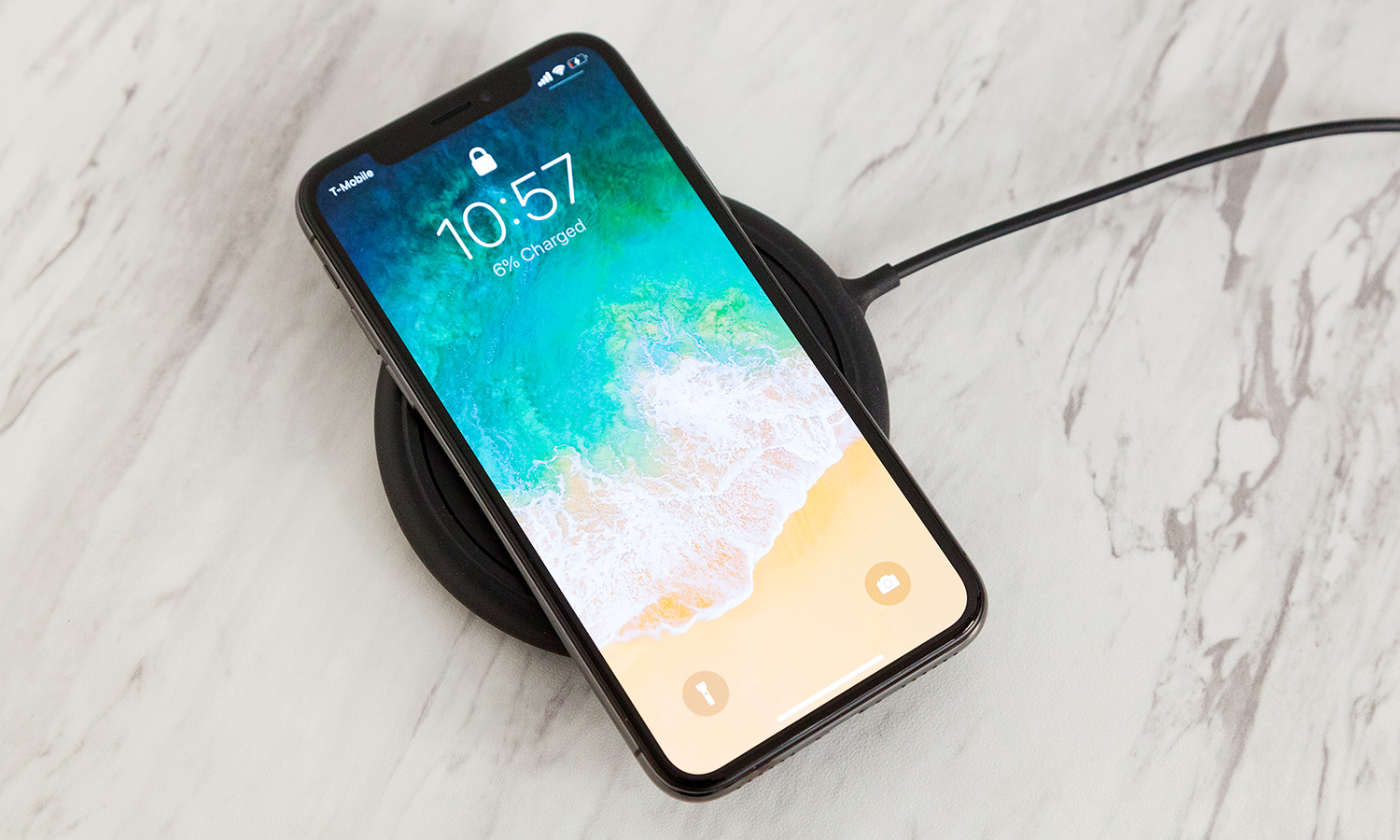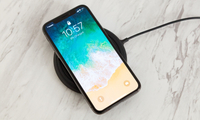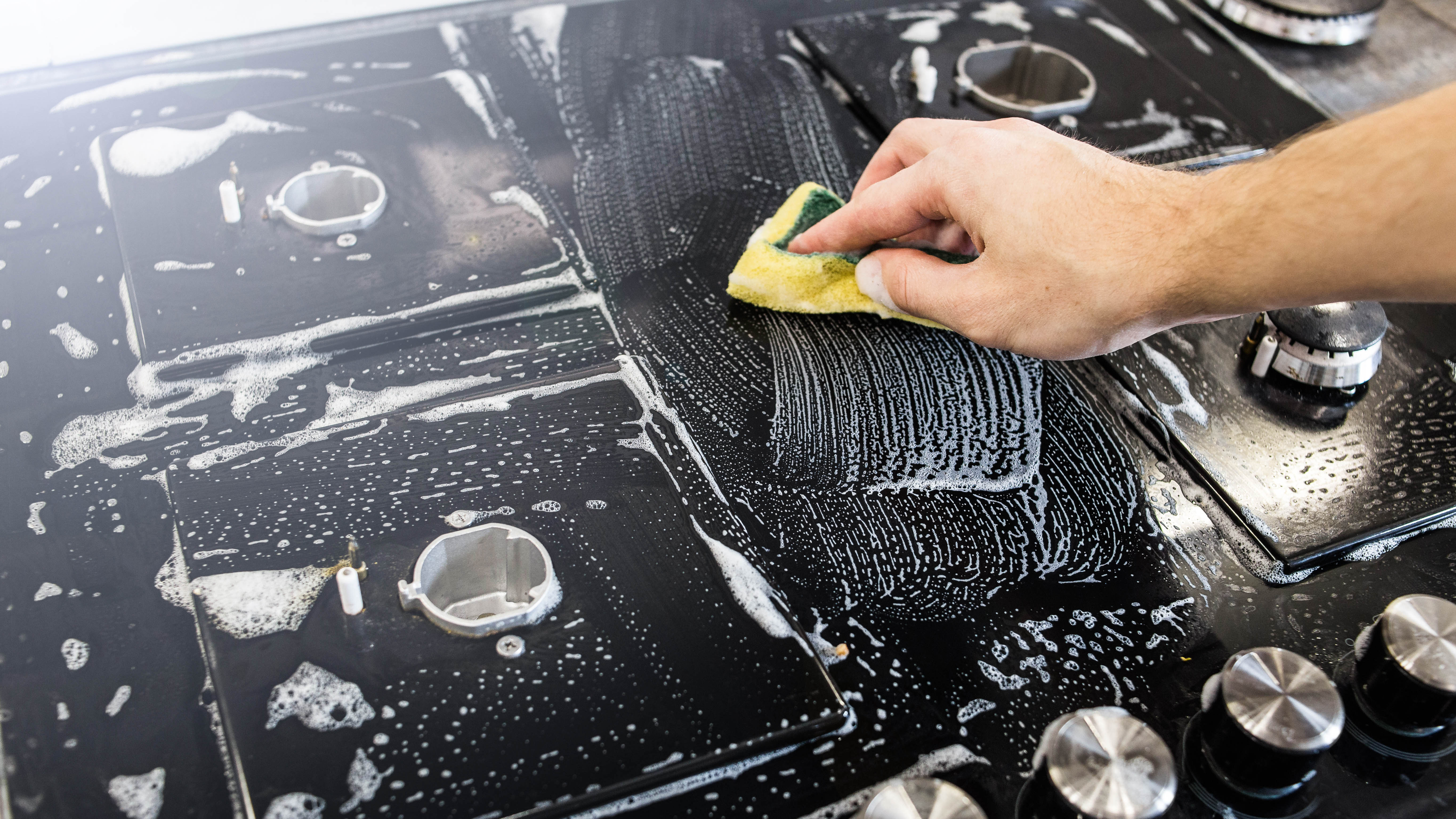iPhone 8 and iPhone X Fast Wireless Charging Tested: Worth It?
We tested the iPhone 8, iPhone 8 Plus and iPhone X with a fast Qi wireless charger and standard wireless charger to find out how much juice you really get.
It's long overdue for Apple's phones, but the iPhone 8, iPhone 8 Plus and iPhone X all support wireless charging. And if you buy a Qi wireless charger with 7.5 watts of output for an extra $25 or so, you'll get fast wireless charging (now that iOS 11.2 has enabled this capability).

To see what a standard Qi charger could do, we tested with the Mophie Charge Force Wireless Charging Base ($35.04 at Amazon), which outputs at 5 watts. We also used the new Mophie Wireless Charging Base ($59.95 at Amazon), whose 7.5 watts of power enables faster wireless charging on the new iPhones. We compared the charging prowess of those options to wired charging using a fast adapter and Apple's included Lightning adapter.
The difference is noteworthy, but Apple's bundled wired Lightning adapter was faster in some cases. And if you don't mind being tethered, fast wired charging is still the fastest way to go.
iPhone X
In our first round of tests, the iPhone X reached 10 percent on both the fast wireless charger and the regular wireless charger after 15 minutes of use. However, charging via the in-box Lightning Adapter (14 percent in 15 minutes) was quicker.
| Row 0 - Cell 0 | 15 Minutes | 30 Minutes |
| Standard Qi Charger | 10% | 17% |
| Mophie Wireless Charging Base (7.5 watts) | 10% | 20% |
| Lightning Adapter | 14% | 17% |
| Fast Wired Charging | 24% | 50% |
If you're willing to spend $68, you can charge the iPhone X to 24 percent in 15 minutes using a combination of a USB-C power adapter and USB-C-to-Lightning adapter.
After 30 minutes, Mophie's fast wireless charger took the iPhone X to 20 percent, compared with 17 percent for the standard wireless charger. That's a decent improvement, but it's not a huge difference.
In this case, Apple's wired Lightning adapter was a bit slower, at 17 percent, after 30 minutes. But the fast wired charging method achieved 50 percent in a half-hour.
MORE: Best iPhone X Cases: Our Top Picks
iPhone 8 Plus
The iPhone 8 Plus reached 12 percent of a charge after being placed on Mophie's fast wireless charger for 15 minutes. That beats not just the standard wireless charger (7 percent) but also the wired Lightning cable (11 percent).
| Row 0 - Cell 0 | 15 Minutes | 30 Minutes |
| Standard Qi Charger | 7% | 16% |
| Mophie Wireless Charging Base (7.5 watts) | 12% | 23% |
| Lightning Adapter | 11% | 26% |
| Fast Wired Charging | 24% | 47% |
At the 30-minute mark, the fast wireless charger delivered 23 percent battery capacity, versus 16 percent for the regular wireless charger. That's about a 44 percent improvement.
With the in-box Lightning adapter, the iPhone 8 Plus reached 26 percent after 30 minutes, so it's a little bit faster than the fast wireless charger.
Fast wired charging (with the right accessories mentioned above) can get you to 47 percent in 30 minutes.
iPhone 8
The iPhone 8's test results make a great case for getting a fast wireless charger. The model we tested offered just 4 percent juice after 15 minutes on a standard charger and 10 percent after 30 minutes. Compare that to 10 percent and 21 percent, respectively, for the fast wireless charger.
So you're getting more than double the charge in the same amount of time.
| Row 0 - Cell 0 | 15 Minutes | 30 Minutes |
| Standard Qi Charger | 4% | 10% |
| Mophie Wireless Charging Base (7.5 watts) | 10% | 21% |
| Lightning Adapter | 13% | 30% |
| Fast Wired Charging | 26% | 49% |
The Lightning adapter on the iPhone 8 got it to 13 percent in 15 minutes and 30 percent in 30 minutes, so that's a good deal quicker than fast wireless charging.
Willing to schlep a bigger USB-C brick and USB-C-to-Lightning cable around? You can get a 26 percent charge in 15 minutes and 49 percent by 30 minutes.
Bottom Line
If you're going to charge your iPhone 8, iPhone 8 Plus or iPhone X wirelessly, a fast wireless charger with 7.5 watts of power is indeed faster than a standard Qi charger. However, the difference in speed wasn't as great as we hoped on the iPhone X.
We saw a bigger delta on the iPhone 8 Plus and especially the iPhone 8. So, if you have either of those two phones, it's definitely worth spending the extra $24 for a fast wireless charger.
As far as wired charging goes, Apple's Lightning adapter was generally faster than Mophie's fast wireless charger, but there were some exceptions.
Overall, the fastest way to charge your new iPhone is a USB-C charger and USB-C-to-Lightning cable, but if you like the convenience of being able to place your phone on a base or mat, a fast wireless charger is better than a standard one.
Sign up to get the BEST of Tom's Guide direct to your inbox.
Get instant access to breaking news, the hottest reviews, great deals and helpful tips.
Mark Spoonauer is the global editor in chief of Tom's Guide and has covered technology for over 20 years. In addition to overseeing the direction of Tom's Guide, Mark specializes in covering all things mobile, having reviewed dozens of smartphones and other gadgets. He has spoken at key industry events and appears regularly on TV to discuss the latest trends, including Cheddar, Fox Business and other outlets. Mark was previously editor in chief of Laptop Mag, and his work has appeared in Wired, Popular Science and Inc. Follow him on Twitter at @mspoonauer.
-
charles.rogen I don't like the amount of heat generated with fast wireless. I only use standard wireless or fast wired.Reply
I'm speaking from my Note 8, but I imagine the iPhones are similar. -
michaeld.vbg.coo Mark,Reply
With the battery issues over the last year plus, any charger I use has to "smart" and/or use the IQ tech - both capable of charge throttling to ensure the charge rate does not exceed that of the batteries being charged by these devices. Since most devices are non-OEM device charge units, it matters if something goes wrong with the battery and warranty-related questions get asked. The "smart and IQ" technologies are my hedge against that happening and perhaps the net benefit of lower wait times for complete device power restoration.
My Samsung Note 8 came with an OEM 2.0 amp/5.0 volt (1.67 amp/9.0 volt) plug-in charge unit using USB-C. It is not labeled as "fast", "quick", "IQ" or any other nomenclature. Perhaps this was specified by the Samsung engineers as a hedge against creating battery issues possibly caused by non-OEM charge units available with 2.4 amp or even 3.0 amp (USB-C) charge units. That all said, I rarely use the OEM charger unit.
So, we can all chase after faster charge times using a more powerful/higher amp charge unit, but how safe is that? I ask since most consumers will only "see" that faster rate and not be aware of possible damage to and other risks created by this topic, imposed on expensive phones. I think we can test these devices, but at what point do they create issues and risks, if they do at all? I looking at you, Samsung, given the extensive tests done to prove battery reliability and robust power management designs. Why the throttled back/dialed down power of the OEM charger that came with the Note 8 phone, if higher powered units were judged to be risks to this device? -
mgverbaan usb c charger? examples please? I have a Note8 like above poster, and with the wireless qi it charges fairly well ( I do not time it, as it is by my bedside overnight mostly), and have a 2.4 charger by living room, and rapid charger in car(where it seems the fastest), could you guys do a test on note/galaxy with similar options? ( dont know if the Note8 can recognize the 7.5 one, or the usb-c charger (again example please)Reply -
michaeld.vbg.coo Reply20559178 said:usb c charger? examples please? I have a Note8 like above poster, and with the wireless qi it charges fairly well ( I do not time it, as it is by my bedside overnight mostly), and have a 2.4 charger by living room, and rapid charger in car(where it seems the fastest), could you guys do a test on note/galaxy with similar options? ( dont know if the Note8 can recognize the 7.5 one, or the usb-c charger (again example please)
Hi mgverbaan,
Yes, the Note 8's bottom port is USB-C (female) as is the power cord end (male). The roughly rectangular OEM plug you got in the box with the phone has the power specs printed on it, very small in gold-toned text. I also have the "wireless" charger.
Our Acura MDX (2017) has (7) 2.4 amp "Smart" USB charger ports and like you observe, they do charge faster than the OEM supplied plugs which deliver 2.0 amps. My Smart IQ Anker A/C wallplug is also quite fast and is designed to throttle the charge to the target device' ability to accept that power stream.
My question remains as does yours: What are we really doing while using these higher powered charge devices to more quickly charge our expensive phones? How long will it take to create any battery-related issues while we are using these charge units, if there are any latent risks we potentiate through that use?
I know Samsung performed many battery tests to prove their product reliability. But, at what test parameters? What results would a technically competent 3rd party prove?


